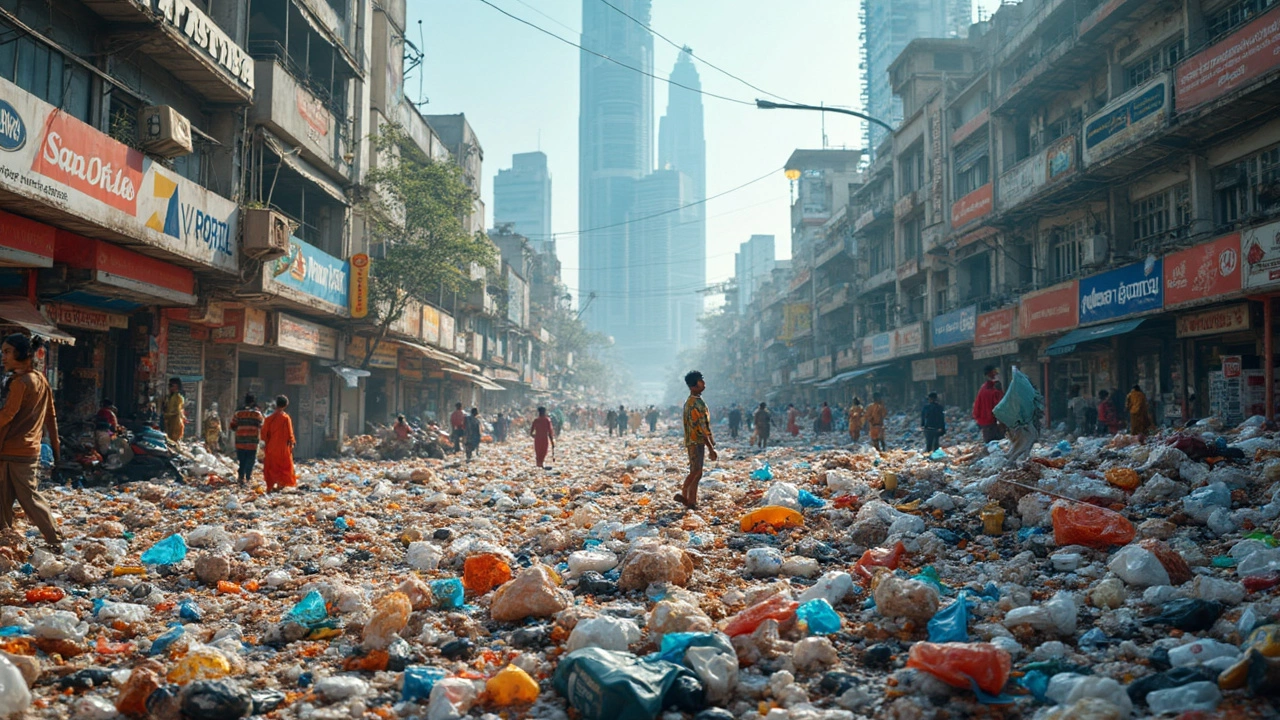- Export Garments from India to USA: 2025 Step‑by‑Step Guide Oct 24, 2025
- Does Your Netflix India Subscription Work in the USA? Everything You Need to Know Jun 25, 2025
- What is the richest furniture company in the world? Nov 21, 2025
- Why Small Scale Businesses Fail: Top Reasons Nobody Tells You Jun 23, 2025
- Best Plastic Manufacturing Companies in 2025 Nov 8, 2025
Environmental Impact: How Manufacturing Affects the Planet
When you hear the word “manufacturing,” you might picture big factories, noisy machines, and endless rows of products. What you often miss is how those factories touch the planet – from the energy they gobble to the waste they dump. Understanding this link helps you make smarter choices, whether you run a plant, buy a product, or just care about the air you breathe.
Why the Environmental Impact of Manufacturing Matters
Every kilogram of steel, every liter of paint, and every bolt you turn into a car adds up. Energy consumption fuels carbon emissions, water use strains local supplies, and leftover scraps end up in landfills. In places like India, rapid growth means the stakes are high: more factories can mean more jobs, but also more pressure on air, water, and soil.
Take the example of the zero‑waste movement. Countries that aim for zero waste aren’t magically eliminating trash; they’re redesigning processes so that scraps become new inputs. This mindset can cut landfill costs and lower carbon footprints at the same time. When a company adopts such a system, it not only helps the planet but also saves money on raw materials.
Practical Steps to Reduce Your Manufacturing Footprint
First, look at energy. Switching to renewable sources—solar panels on the roof or wind power bought from the grid—can shave a big chunk off emissions. Even simple upgrades, like LED lighting and variable‑speed drives on motors, pile up savings.
Second, rethink waste. Instead of tossing metal shavings, set up a recycling loop where they’re melted down for new parts. Food‑processing plants can turn organic waste into bio‑fuel or compost. The key is to ask, “What can we feed back into the system?”
Third, optimize water use. Closed‑loop cooling systems recycle water instead of pulling fresh supply each day. For chemical manufacturers, treating and reusing process water can cut costs dramatically while protecting local rivers.
Finally, choose materials wisely. Lightweight alloys, recycled plastics, and bio‑based polymers often need less energy to produce. When you source from suppliers with strong sustainability records, the impact spreads beyond your own walls.
Rise Corp India lives by these principles. Their blog covers topics like “Zero Waste Countries” and “AI Chip Manufacturing in India,” showing how high‑tech and eco‑friendly can go hand‑in‑hand. By reading these posts, you’ll see real data, practical checklists, and step‑by‑step guides you can apply today.
In short, every decision in manufacturing—energy, waste, water, materials—has a ripple effect on the environment. Small changes add up, and the right information makes it easy to act. Dive into the articles under this tag, pick the tips that fit your situation, and start lowering your footprint now.
What Plastic Pollutes the Ocean the Most?
- Aarav Sekhar
- Apr 13, 2025
Plastic pollution in the ocean is a huge problem, with certain types of plastic causing more damage than others. Understanding which plastics are most harmful can help us make better choices and push for more responsible manufacturing and waste management practices. From microplastics to large debris, each type of plastic presents unique challenges to marine life and ecosystems. This article explores the major culprits of ocean plastic pollution and suggests practical tips for reducing their impact.
Who Still Dumps Garbage in the Ocean: The Role of Plastic Manufacturers
- Aarav Sekhar
- Apr 3, 2025
Ever wondered who's responsible for still dumping garbage in our oceans? Shockingly, plastic manufacturing companies are major contributors to this problem. Despite global awareness and efforts, certain practices within these companies continue to pollute our waters. Dive into the complex world of plastic production, unravel the industry's dirty secrets, and explore steps towards a cleaner future.
Which Company Leads in Plastic Pollution Today?
- Aarav Sekhar
- Feb 16, 2025
The race to uncover the top plastic polluters brings attention to the adverse impact these companies have on the environment. Learn which corporations are the major contributors to plastic waste, how consumer choices play a role, and discover innovative solutions aiming to tackle this growing concern. From multinational giants to grassroots initiatives, the fight against plastic pollution opens up dialogues on sustainability and corporate responsibility.
Who's Really Behind Plastic Pollution?
- Aarav Sekhar
- Feb 5, 2025
Plastic pollution is a growing environmental issue, with plastic manufacturing companies at the center of the debate. This article explores the role these companies play in pollution and whether we can hold them accountable. With insights into the industry's practices, it's time to understand who shoulders the responsibility for our planet's plastic woes.



